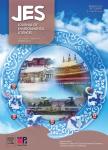Enzyme extraction by ultrasound from sludge flocs
Enzyme extraction by ultrasound from sludge flocs作者机构:State Key Laboratory of Pollution Control and Resource Reuse Key Laboratory of Yangtze River Water Environment College of Environmental Science and Engineering Tongji University Shanghai 200092 China
出 版 物:《Journal of Environmental Sciences》 (环境科学学报(英文版))
年 卷 期:2009年第21卷第2期
页 面:204-210页
核心收录:
学科分类:083002[工学-环境工程] 0830[工学-环境科学与工程(可授工学、理学、农学学位)] 08[工学]
基 金:supported by the Hi-Tech Research and Development Program (863) of China (No.2006AA06Z384)
主 题:enzymes extracellular polymeric substances extraction method sludge flocs statistical analysis ultrasound
摘 要:Enzymes play essential roles in the biological processes of sludge treatment. In this article, the ultrasound method to extract enzymes from sludge flocs was presented. Results showed that using ultrasound method at 20 kHz could extract more types of enzymes than that at 40 kHz and ethylenediamine tetraacetic acid (EDTA) methods. The optimum parameters of ultrasound extraction at 20 kHz were duration of 10 min and intensity of 552 W/g TSS. Under the optimum condition, ultrasound could break the cells and extract both the extracellular and a small part of intercellular enzymes. Ultrasound intensity was apparently more susceptive to enzyme extraction than duration, suggesting that the control of intensity during ultrasound extraction was more important than that of duration. The Pearson correlation analysis between enzyme activities and cation contents revealed that the different types of enzymes had distinct cation binding characteristics.



